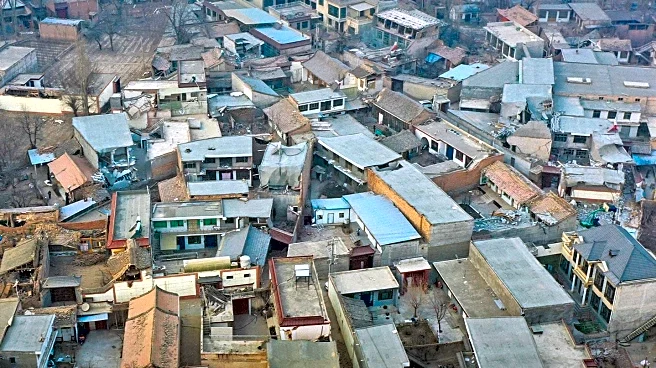What's Happening?
As global temperatures continue to rise, the disparity between those who can afford air conditioning and those who cannot is becoming increasingly evident. A project titled 'The Cooling Solution' by photographer Gaia Squarci and researcher Jacopo Crimi explores how people in Brazil, India, Indonesia, and Italy are adapting to extreme heat. The project highlights the accessibility of air conditioning across different socioeconomic groups and showcases both modern and ancient architectural solutions to heat management. The study reveals that while air conditioning is a common solution for some, it remains an unaffordable luxury for others, emphasizing the inequality in heat adaptation.
Why It's Important?
The growing demand for air conditioning, projected to reach 5.6 billion units by 2050, underscores significant socioeconomic disparities. This demand not only highlights the unequal access to cooling solutions but also raises concerns about energy consumption and environmental impact. The reliance on air conditioning in wealthier areas contrasts sharply with the struggles faced by lower-income communities, who often resort to unsafe methods to cope with heat. This disparity affects vulnerable groups such as the elderly and children, who are at higher risk during heatwaves. The issue calls for sustainable and inclusive solutions to ensure equitable access to cooling technologies.
What's Next?
The project suggests that architects and urban planners may increasingly focus on designing buildings that minimize reliance on air conditioning, using both modern technologies and traditional methods. This shift could lead to more sustainable urban environments, reducing energy consumption and promoting equitable access to cooling solutions. Policymakers might also consider regulations and incentives to support the development of energy-efficient cooling systems and address the needs of underserved communities. Public awareness campaigns could play a role in encouraging responsible use of air conditioning and exploring alternative cooling methods.
Beyond the Headlines
The project raises ethical questions about the responsibility of wealthier nations and individuals to address climate adaptation disparities. It also highlights the cultural dimensions of heat adaptation, as different societies employ unique strategies to cope with rising temperatures. Long-term, this issue could drive innovation in sustainable architecture and urban planning, fostering global collaboration to tackle climate challenges. The focus on equitable access to cooling solutions may also influence public policy and international agreements on climate adaptation.











